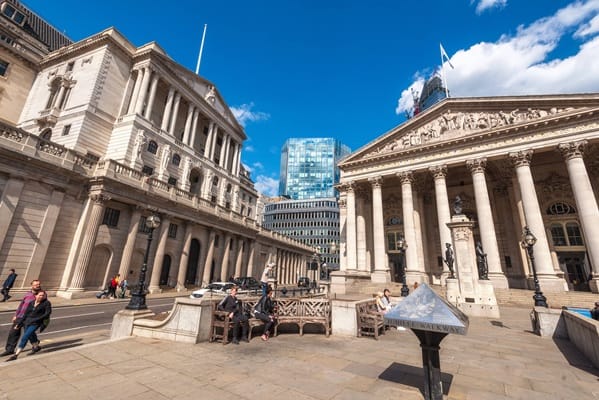Bussiness
How you can benefit from global transition to rate cuts – London Business News | Londonlovesbusiness.com

The recent move by the Bank of England (BoE) to cut interest rates from a 16-year high of 5.25% to 5.00% marks the beginning of what is expected to be a broader trend among central banks worldwide.
Investors need to adapt their strategies to capitalise on this changing environment, where interest rates are expected to gradually decline over the coming months and years.
The BoE’s decision in August to lower rates was a tight call, with the Monetary Policy Committee split 5-4 in favour of the cut.
However, the message was clear: the era of peak interest rates is over. While inflation in the UK remains above target, Governor Andrew Bailey has emphasized that further reductions in borrowing costs will be made carefully. This measured approach suggests that the BoE, like other central banks, recognises the need to support economic growth as inflationary pressures begin to ease.
Looking ahead, investors should anticipate further rate cuts not only from the BoE but also from other major central banks, including the US Federal Reserve, the European Central Bank, and the People’s Bank of China.
The transition to lower rates reflects a global consensus that monetary tightening has achieved its purpose in reining in inflation, and now is the time to support economic expansion.
The shift toward lower interest rates presents six opportunities for investors.
First, growth stocks are back in focus. During periods of rising interest rates, growth stocks often suffer as higher borrowing costs weigh on valuations and future earnings potential.
But with the tide turning, growth stocks, particularly in sectors such as tech and consumer discretionary, are likely to see renewed investor interest.
Companies that are heavily reliant on debt for expansion, such as those in tech and biotech, should benefit from cheaper financing. Investors should consider rebalancing their portfolios to increase exposure to high-quality growth stocks that have the potential for outsized gains in a lower-rate environment.
Second, dividend-paying stocks to be used as safe havens. While growth stocks may surge, dividend-paying stocks will also remain attractive, particularly in a period of economic uncertainty. Lower interest rates make fixed-income investments like bonds less appealing, driving income-seeking investors toward equities with reliable dividend payouts.
Utilities, consumer staples, and real estate investment trusts (REITs) are sectors where investors can find strong dividend yield opportunities. These stocks not only provide income but also offer stability as central banks shift their policies.
Third, the bond market dynamics. The bond market will experience notable changes as well. When interest rates fall, bond prices typically rise, creating an opportunity for capital gains. Investors holding long-duration bonds should benefit the most from declining rates.
Additionally, corporate bonds are likely to see increased demand as lower borrowing costs reduce the risk of default and improve the credit profiles of many companies. For fixed-income investors, this is the time to consider extending duration in bond portfolios and increasing exposure to investment-grade corporate bonds.
Fourth, the value of commodities and precious metals. As central banks ease monetary policies, the US dollar will weaken, which often leads to higher prices for commodities and precious metals.
Gold and silver, in particular, tend to perform well in environments where interest rates are low, and inflation is not a significant threat. Investors looking for a hedge against potential currency depreciation should consider adding commodities and precious metals to their portfolios.
And fifth, global equities. With multiple central banks expected to cut rates, the opportunities extend beyond the US and the UK. Investors should consider diversifying into international equities, especially in regions where growth prospects are improving as a result of more accommodative monetary policies.
Emerging markets, in particular, could see a resurgence as global liquidity improves, providing support for both equity and debt markets in these regions.
As we move into this new phase of monetary policy, it’s important for investors to remain flexible and forward-thinking. While the exact timing and magnitude of future rate cuts will vary from country to country, the broader trend toward lower rates is clear.
This creates an environment where risk assets—whether they be equities, real estate, or commodities—are likely to outperform as liquidity increases and borrowing costs decrease.
Now is the time for investors to reassess their portfolios and ensure they are well-positioned to take advantage of the opportunities that this new monetary cycle will bring.








